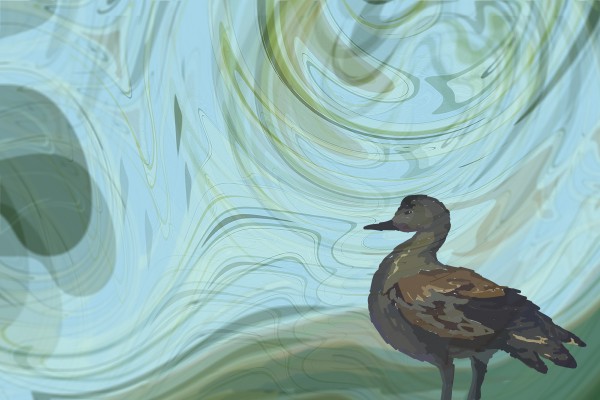A team of researchers, including Otago staff and students, have discovered an exciting new fossil at St Bathans in Central Otago: a species of shelduck. The original animal is believed to have been massive, standing at a whopping 70cm. For a duck, that’s pretty tall.
The duck was believed to have lived somewhere between 15-19 million years ago. Dr Nic Rawlence, from the Zoology department, emphasised that the world where giant ducks waddled the earth was vastly different to the Aotearoa we know today. “It was a greenhouse world, with palm trees, coconut trees and eucalypt forests… and a giant lake.” That giant lake, Lake Manuherikia, was believed to have covered at least 3,500 square kilometres, or around the size of six Lake Taupōs.
In what Dr Rawlence called an “Alice in Wonderland” version of our world - “strangely familiar, but with outlandish aspects” - were the tūpuna of familiar animals like kiwi and tuatara, but also flamingos and crocodiles. Cruising around in this humid, almost tropical atmosphere were also at least seven different species of duck - although this specimen was probably the biggest and baddest of them all.
A team including staff and postgrads from Otago’s Zoology, Anatomy and Geology Depts., Massey Uni (in Albany) and Te Papa stumbled upon a bone which “looked like a duck, but not like any duck we know of,” according to Dr Rawlence. “It was a lot bigger, and the proportions were all wrong”.
Further investigation unearthed that it was indeed a new species of duck, and while Dr Rawlence was keen to emphasise that they were “still processing through the material we’ve excavated,” they know enough to make a few assumptions about what these ducks would be like.
A bit like the shelducks we know and love around campus today, they would be “most happy to be on the ground, grazing on grass,” although they would also be “quite happy in the water”. However, don’t let this seemingly docile behaviour fool you: despite it being too early to determine whether they would have alpha-ed over the six other species of duck around at the time, “knowing the shelducks we see today, this was probably a duck you don’t want to mess with,” warned Dr Rawlence.
He spoiled Critic’s fantasies of using these fossils as the foundation for a new Jurassic Duck Park, warning that “there wouldn’t be enough genetic material to bring it back. The current record [for extracting genetic material from fossils] is around 1.2 million years… any traces of genetic material would be gone by now.”
Discovering a new species meant he also has first dibs on naming it, and rather wholesomely, he decided to name it after his mum, Catriona. “My mum inspired my love of natural history… Mum loved hearing stories of my outdoor adventures, wanting full reports
on what had been found – she would have been excited by this discovery.” The prospect of having a giant duck named after us is what gets Critic up in the morning.
If discovering giant ducks is what gets you up in the morning too, Dr Rawlence encouraged students to “take a Zoology or Geology degree, or even both,” and emphasised that their “researchers, including myself, would welcome any postgrads. We’ve got plenty of projects”.



